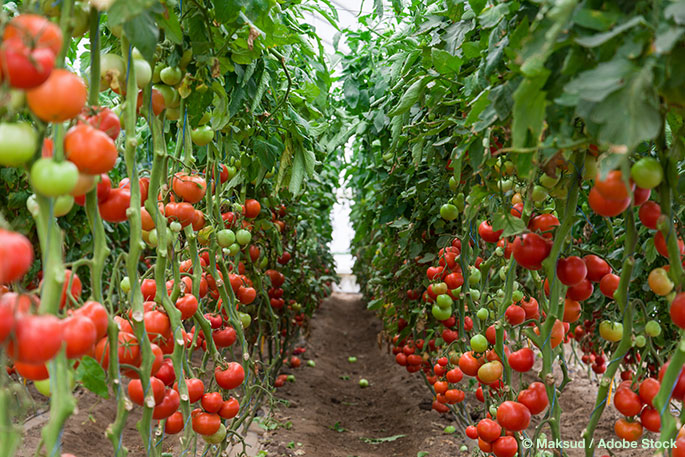
Traditional farms are extraordinarily wasteful. They take a huge amount of energy, require massive amounts of land, and only a percentage of what’s actually grown ever makes its way onto grocery store shelves. Indoor farming, though, has shown more and more promise as technology advances. Indoor farms require no pesticides, use less water, less energy, and the food it generates is more consistent in quality. Sundrop Farm, set up in the Australian desert, has taken things a step further.
They’re growing tomatoes using only seawater and solar power.
How Does That Work?
According to New Scientist, seawater is pumped two kilometers to the farm, which was built in the arid Port Augusta region. A solar desalination plant, which uses reflected sunlight from mirrors, provides enough water for the 180,000 tomatoes being grown inside the greenhouse. The plant also produces enough solar power to provide for the greenhouse’s electricity needs.
The innovation doesn’t stop there, though. Seawater is used to soak cardboard around the perimeter of the greenhouse. This keeps the air moist, but also kills bacteria that can’t survive the salt. Additionally, rather than being grown in soil, the tomato plants are grown in coconut husks. This eliminates the need for pesticides, as well as for importing soil to a region that is fairly hostile to plant growth.
Burgeoning Success
Unlike some food waste solutions that only work in theory, Sundrop Farm is already producing food that’s going to market. The design works, and though it’s far more expensive up-front than typical greenhouse designs, the investment pays off over time due to the lower costs of energy, and saved waste costs.
In fact, Sundrop Farm has been so successful that the design is likely going to make its way to both Europe, and the United States, to popularize an effective way of growing food without the sheer extravagance of old-world farming.




































































































































 Three Ways to Engage Teams and Clients to Maximize Your Recycling Program Engagement
Three Ways to Engage Teams and Clients to Maximize Your Recycling Program Engagement  How to Integrate Accessibility Into Your Sustainability Planning
How to Integrate Accessibility Into Your Sustainability Planning  Why Park Benches Can Promote Workplace Well-Being
Why Park Benches Can Promote Workplace Well-Being 
